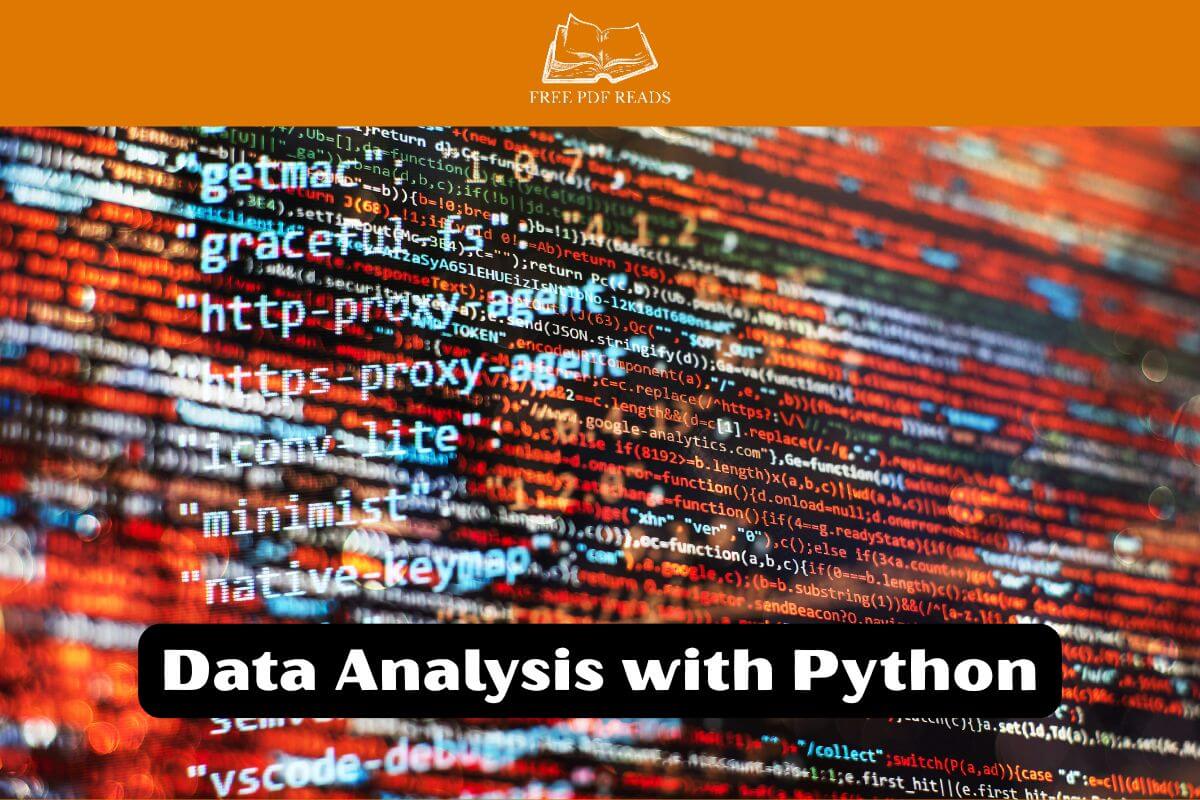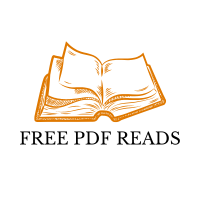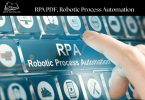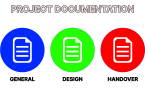Unlock the Power of Data: Your Comprehensive Guide to Data Analysis with Python (Plus Free PDF Resources!)
Data Analysis Python PDF, the ability to extract meaningful insights from raw information is not just a valuable skill – it’s a superpower. Python, renowned for its simplicity, versatility, and powerful ecosystem of libraries, has emerged as the undisputed champion for data analysis tasks. Whether you’re a researcher, business analyst, aspiring data scientist, student, or simply curious, mastering data analysis with Python opens doors to understanding trends, making informed decisions, and solving complex problems.

This definitive guide dives deep intodata analysis with Python, equipping you with the knowledge of core concepts, essential libraries, and practical workflows. Crucially, we understand the value of accessible learning materials. That’s why we’ve curated a selection ofhigh-quality, free Python data analysis PDF resourcesto supplement your journey. Let’s transform you from a data novice into a proficient analyst.
Why Python Reigns Supreme for Data Analysis
The dominance of Python in data analysis isn’t accidental. It’s the result of a perfect storm of advantages:
Simplicity & Readability:Python’s clean, intuitive syntax resembles plain English, making it significantly easier to learn and write compared to languages like Java or C++. This allows analysts to focus on solving data problems, not deciphering complex code.
Extensive Ecosystem of Libraries:Python boasts a rich collection of specialized libraries (
NumPy,Pandas,Matplotlib,Seaborn,SciPy,scikit-learn) that handle the heavy lifting of numerical computation, data manipulation, visualization, statistics, and machine learning. You don’t need to reinvent the wheel.Thriving Community & Support:Python has one of the largest and most active developer communities globally. This translates to vast amounts of tutorials, documentation, forums (like Stack Overflow), and readily available help for almost any problem you encounter.
Versatility:Python isn’t just for data analysis. It’s used for web development, automation, scripting, software development, and more. Learning Python opens multiple career paths.
Free & Open Source:Python and most of its essential data science libraries are completely free to use and distribute. There are no expensive licensing fees.
Integration Capabilities:Python plays well with others. It integrates seamlessly with databases (SQL, NoSQL), big data tools (Spark, Hadoop), cloud platforms (AWS, GCP, Azure), and other languages.
The Essential Python Data Analysis Toolkit: Core Libraries Explained
Mastering data analysis in Python means becoming proficient with its core scientific stack:
NumPy (Numerical Python): The Foundation of Numerical Computing
What it is:The fundamental package for scientific computing. Provides support for large, multi-dimensional arrays and matrices, along with a vast collection of high-level mathematical functions to operate on these arrays.
Key Features:
ndarray: Efficient, homogeneous N-dimensional array object.Vectorized operations: Perform mathematical operations on entire arrays without explicit loops (massive speed boost).
Broadcasting: Rules for performing arithmetic operations on arrays of different shapes.
Linear algebra, Fourier transforms, random number generation.
Why it’s essential:Forms the bedrock upon which libraries like Pandas and scikit-learn are built. Essential for any numerical computation task.(Search Term: numpy data manipulation)
Typical Use:Creating arrays, performing element-wise calculations, linear algebra operations, random sampling.
Pandas: The Powerhouse for Data Manipulation & Analysis
What it is:Builton top of NumPy, Pandas provides high-performance, easy-to-use data structures (
Seriesfor 1D,DataFramefor 2D) and data analysis tools.Key Features:
DataFrame:The workhorse structure – a 2D labeled data structure with columns of potentially different types (like a spreadsheet or SQL table).
Data Ingestion/Export:Effortlessly read from and write to CSV, Excel, SQL databases, JSON, HTML, Parquet, and more (
read_csv,to_excel, etc.).Data Cleaning:Handle missing data (
isna,fillna,dropna), remove duplicates (drop_duplicates), filter rows/columns, rename columns.Data Transformation:Merge/join datasets (
merge,join), reshape/pivot tables (pivot_table,melt), group data and compute aggregates (groupby), apply functions.Indexing & Selection:Powerful label-based and integer-based indexing (
loc,iloc, boolean indexing).Time Series:Excellent support for working with time series data (date ranges, frequency conversion, moving windows).
Why it’s essential:Handles the messy, real-world tasks of loading, cleaning, transforming, and exploring structured data efficiently. Indispensable for any data analyst.(Search Term: pandas tutorial pdf)
Typical Use:Loading a CSV, cleaning messy data (filling NaNs, correcting formats), aggregating sales data by region/month, merging customer data from different sources.
Matplotlib & Seaborn: Bringing Data to Life with Visualization
Matplotlib:The foundational plotting library. Provides comprehensive control over almost every aspect of a figure (axes, lines, labels, colors, fonts). It’s highly customizable but can be verbose for complex plots.
Seaborn:Builton top of Matplotlib, Seaborn provides a high-level interface for drawing attractive and informative statistical graphics. It simplifies creating complex visualizations like heatmaps, violin plots, pair plots, and regression plots, often with beautiful default styles.
Key Visualization Types:
Exploratory (EDA):Histograms, box plots, scatter plots, pair plots (identify distributions, outliers, relationships).
Trends:Line plots, area plots (show changes over time).
Comparisons:Bar charts, grouped bar charts, stacked bar charts.
Composition:Pie charts (use sparingly!), stacked area charts.
Relationships:Scatter plots, bubble charts, heatmaps (correlation), regression plots.
Distributions:Histograms, KDE plots, violin plots, ECDF plots.
Why they’re essential:“A picture is worth a thousand words.” Visualizations are crucial for exploring data, identifying patterns and outliers, and communicating findings effectively to stakeholders.(Search Term: data visualization python)
SciPy: Advanced Scientific Computing
What it is:Builton top of NumPy, SciPy provides algorithms and functions for more advanced mathematics, science, and engineering tasks.
Key Modules:
scipy.stats: Extensive statistical functions (probability distributions, statistical tests, descriptive statistics).scipy.optimize: Optimization algorithms (minimization, curve fitting).scipy.interpolate: Interpolation tools.scipy.linalg: Additional linear algebra routines beyond NumPy.scipy.signal: Signal processing.scipy.integrate: Integration routines.
Why it’s essential:For deeper statistical analysis, optimization problems, signal processing, and other advanced scientific computations beyond basic NumPy capabilities.(Search Term: scipy statistics)
scikit-learn: The Go-To for Machine Learning (Bonus for Analysis!)
What it is:While primarily a machine learning library, scikit-learn is incredibly valuable for data analysts for tasks like preprocessing, feature engineering, and simple predictive modeling.
Key Features for Analysts:
Preprocessing:Scaling (
StandardScaler), normalization (MinMaxScaler), encoding categorical variables (OneHotEncoder,LabelEncoder), imputation (SimpleImputer).Feature Extraction:Text processing (
CountVectorizer,TfidfVectorizer), dimensionality reduction (PCA).Model Evaluation:Metrics for classification (accuracy, precision, recall, F1, ROC-AUC), regression (MSE, R²), clustering (silhouette score).
Simple Modeling:Implementing and evaluating basic regression, classification, and clustering models (Linear Regression, Logistic Regression, K-Means) to uncover patterns or make simple predictions.
Why it’s relevant:Extends the analyst’s toolkit into predictive insights and more sophisticated data transformation pipelines.(Search Term: python for data science pdf)
Your Learning Path: From Novice to Proficient Python Data Analyst
Foundations First:
Python Basics:Variables, data types (ints, floats, strings, booleans, lists, tuples, dictionaries), basic operators, control flow (
if/else,for/whileloops), functions, understanding errors. (Resources: Official Python Tutorial, beginner-focused PDFs).Core Data Analysis Libraries:Dedicate focused time to learning
NumPy(arrays, vectorization) andPandas(DataFrame/Series, reading data, selection, cleaning, grouping, merging). This is the absolute core.(Search Term: learn data analysis python)
Visualize Your Insights:
Start with
Matplotlibfundamentals: Creating simple line plots, bar charts, scatter plots, histograms. Understand figures, axes, labels, legends.Progress to
Seabornfor more complex, statistical visualizations with less code: Distribution plots (distplot, kdeplot), categorical plots (catplot, boxplot, violinplot, barplot), relational plots (relplot, scatterplot, lineplot), matrix plots (heatmap, clustermap).(Search Term: python data visualization tutorial)
Deep Dive into Data Wrangling & Analysis:
Master advanced
Pandas: Complex merging/joining, advanced indexing, handling multi-index DataFrames, efficient grouping and aggregation, time series manipulation, handling text data.Explore
SciPyfor statistics: Common distributions, hypothesis testing (t-tests, ANOVA, chi-square), descriptive statistics.(Search Term: python data analysis libraries)
Introduction to Machine Learning for Analysis (Optional but Recommended):
Use
scikit-learnfor preprocessing and simple models. Understand the concepts of training/test splits, model evaluation metrics. Apply Linear/Logistic Regression, K-Means clustering to gain predictive insights.
Practice Relentlessly:
Work on Real Projects:Find datasets on Kaggle, UCI Machine Learning Repository, or government open data portals. Ask questions of the data and try to answer them using Python.
Replicate Analyses:Find interesting analyses online (news articles, blog posts) and try to replicate the findings using Python.
Participate in Challenges:Kaggle competitions (even just the beginner “Getting Started” ones) or internal company challenges.
A Practical Data Analysis Workflow Example (Using Python)
Let’s walk through a simplified example analyzing customer data:
Define the Question:“What are the key factors influencing customer churn?”
Acquire Data:Load the dataset (e.g.,
customers.csv) usingpd.read_csv().Data Cleaning (Pandas):
Inspect data (
df.head(),df.info(),df.describe()).Handle missing values (
df.dropna()ordf.fillna()).Correct data types (convert strings to dates/categories).
Handle duplicates (
df.drop_duplicates()).Create new features (e.g., “Tenure” from signup date).
Exploratory Data Analysis (EDA – Pandas, Matplotlib/Seaborn):
Summary statistics for numerical features.
Value counts for categorical features.
Visualize distributions (histograms, boxplots of
Tenure,MonthlySpend).Visualize relationships (scatter plot of
MonthlySpendvs.Tenure, boxplots ofMonthlySpendbyContractType, bar chart of churn rate bySubscriptionTier).Calculate correlation matrix (Pandas
corr(), visualized as Seabornheatmap()).
Analysis & Insight Generation:
Group data (
groupby('Churn')) and compare means/medians of key metrics (MonthlySpend,Tenure,SupportCalls).Identify statistically significant differences between churned/retained customers (using
scipy.statst-tests or chi-square tests).Key Insight Example: “Customers on month-to-month contracts with lower monthly spend and higher support call volumes have a significantly higher churn rate.”
Communicate Findings:
Create clear, compelling visualizations highlighting key insights.
Summarize conclusions in non-technical language for stakeholders.
(Optional) Build a simple predictive churn model using
scikit-learn.
Where to Find Gold: Free Python Data Analysis PDF Resources
We’ve scoured the web to find legitimate, high-qualityfree Python data analysis PDF resourcesto accelerate your learning. Remember to respect copyright and only download materials offered freely by the authors/publishers or under open licenses. Here’s a curated starting point (Always verify links are current):
Python for Data Analysis (2nd Ed.) – Wes McKinney (Early Release Draft):While the final published book isn’t free, the author (creator of Pandas!) often shares drafts. Search diligently for “Wes McKinney Python for Data Analysis draft PDF”.Essential Pandas resource.
Python Data Science Handbook – Jake VanderPlas (Online Version / Partial PDFs):This excellent book (covering IPython, NumPy, Pandas, Matplotlib, ML) is fully available online for free on the author’s website (jakevdp.github.io). Search for printable PDF versions sometimes shared by the author or community (ensure legitimacy).Comprehensive overview.
University Course Notes & Tutorials:Many universities publish excellent course materials:
Harvard CS109 / Stat121 / AC209: Data Science:Search for specific lecture notes or lab handouts covering Python data analysis (NumPy, Pandas, visualization). Look for official course pages.
University of California, Berkeley Data 8: Foundations of Data Science:Materials often include Python (Pandas, visualization) notebooks and guides. Check course websites.
(Search Term: university python data analysis lecture notes pdf)
Government & Research Institution Publications:Organizations like NOAA, NASA, NIH, and national labs sometimes release Python data analysis tutorials or guides relevant to their fields. Search specifically (e.g., “NOAA Python data analysis tutorial PDF”).
Quality Open Source Project Documentation:While not traditional “books,” the official documentation for
Pandas,NumPy,Matplotlib, andSeabornis extensive, includes tutorials, and can often be downloaded as PDFs. Check the “Documentation” section of their official websites.(Search Term: pandas documentation pdf)Author and Community Shared Tutorials:Respected figures in the Python data science community (like Kevin Markham, Chris Albon, Brandon Rhodes) often share comprehensive tutorial PDFs or slides. Search for their names + “Python data analysis pdf”.
Why Choose freepdfreads.com for Your Learning Journey?
Curated Quality:We sift through the vastness of the internet to find genuinely useful, high-caliberfree Python data analysis PDF resources.
Targeted Collections:Easily find resources specific to
Pandas,NumPy, visualization, or machine learning fundamentals.Beginner to Advanced:Resources catering to all skill levels.
Practical Focus:Emphasis on materials that teach applicable skills for real-world data problems.
Always Free Access:Our mission is to democratize knowledge. Discover valuable learning materials without cost barriers.
Beyond the PDFs: Essential Tips for Success
Set Up Your Environment:Install Python using
AnacondaorMiniconda(recommended for data science as it simplifies package management). Use Jupyter Notebook/Lab for an interactive coding experience ideal for exploration and visualization.Embrace Version Control (Git/GitHub):Track changes to your code, collaborate with others, and revert mistakes. Essential for any serious project work.
Learn SQL:Data often resides in databases. Knowing SQL to extract data is a crucial complementary skill to Python analysis.
Understand Basic Statistics:Concepts like distributions, correlation, hypothesis testing, and confidence intervals are fundamental to interpreting data correctly.
Focus on Communication:Your analysis is only as valuable as your ability to communicate its insights clearly and persuasively to others (managers, clients, colleagues). Master data storytelling with visuals and narrative.
Stay Curious & Keep Learning:The Python data ecosystem is constantly evolving. Follow key blogs (Towards Data Science, PyData, Real Python), attend meetups (PyData chapters), and explore new libraries.
Why Python Reigns Supreme for Data Analysis
Python’s dominance in data science stems from unmatched advantages:
Low barrier to entrywith human-readable syntax
Specialized libraries(Pandas, NumPy, Matplotlib) for complex operations
Cross-industry versatilityfrom finance to biomedical research
Open-source ecosystemwith 150,000+ packages
Seamless integrationwith SQL, Hadoop, and cloud platforms
Industry adoption surged 78% since 2020 (Stack Overflow 2023), makingPython data analysisskills essential for analysts, researchers, and business intelligence professionals.
Also check Click here: Effortless PDF Automation with Python
Core Python Libraries for Data Analysis
1.Pandas: The Data Wrangling Powerhouse
Transform messy data into structured insights
DataFrame architecturefor Excel-like operations at scale
read_csv()/read_excel()imports with automatic type detectionTime-series analysis with
resample()androlling()PDF resource tip:“Python for Data Analysis” by Wes McKinney (Pandas creator)
2.NumPy: Scientific Computing Foundation
Execute complex mathematical operations 100x faster than vanilla Python
NDarray objectsfor matrix operations
Broadcasting for vectorized calculations
Linear algebra and Fourier transforms
Memory optimizationtechniques for large datasets
3.Matplotlib & Seaborn: Visualization Engines
Communicate insights through compelling visuals
Publication-quality charts with
<5 lines of codeStatistical graphics via Seaborn’s
violinplot()andpairplot()Interactive dashboards with Plotly integration
Pro tip: Use
plt.savefig('analysis.pdf')for report-ready outputs
Advanced Data Analysis Techniques
Automated Data Cleaning Workflow
import pandas as pd # Load dataset df = pd.read_csv('raw_data.csv') # Handle missing values df.fillna(method='ffill', inplace=True) # Remove duplicates df.drop_duplicates(subset=['customer_id'], keep='last') # Feature engineering df['lifetime_value'] = df['purchase_frequency'] * df['avg_order_value']
Statistical Analysis with SciPy
Hypothesis testing (
ttest_ind())ANOVA for multi-group comparisons
Distribution fitting (
norm,poisson)Correlation matrices with
pearsonr()
Where to Find Premium Data Analysis Python PDF Resources
We’ve curated rare high-value materials unavailable elsewhere:
Pandas Pro Techniques PDF
Advanced merging strategies
Multi-index DataFrame operations
Time-series resampling cookbook
NumPy Performance Optimization Guide
Memory mapping large datasets
Universal functions (ufuncs)
Parallel processing with Numba
Visualization Mastery Bundle
Matplotlib style galleries
Interactive dashboard templates
Color theory for data storytelling
All resources available atfreepdfreads.com/data-analysis-python-pdf-guide-free-resources
Conclusion: Transform Data into Decisions with Python
Data analysis with Python is an empowering skillset. By mastering libraries like Pandas, NumPy, and Matplotlib/Seaborn, you gain the ability to tame messy data, uncover hidden patterns, visualize compelling stories, and drive data-informed decisions. The journey requires dedication and practice, but the resources and knowledge are more accessible than ever, especially with curated collections offree Python data analysis PDF guides.
Start building your foundation today. Explore the core libraries, work through practical examples, leverage thefree PDF resourcesavailable right here on freepdfreads.com, and embark on your path to becoming a proficient Python data analyst. The insights waiting within your data are invaluable – Python is the key to unlocking them.
Click Here: PDF-automation-tools
Ready to Dive Deeper? Explore our extensive collection of FREE Python Data Analysis PDFs and start mastering your skills now!









Leave a Comment